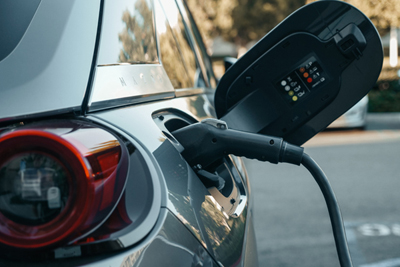In support of California's goals for vehicle electrification and climate action, Pacific Gas and Electric Company (PG&E) is offering two new programs designed to improve access to electric vehicle (EV) charging infrastructure for customers in underserved communities.
The Empower EV and Multifamily Housing and Small Business EV Charger pilot programs provide no-cost EV charging infrastructure and resources to help address the costs of installing chargers at single-family homes, multifamily housing units, nonprofit organizations and small businesses throughout low- and moderate-income communities in PG&E's service area.
According to a recent study analyzing data from the California Energy Commission, high upfront vehicle costs, lack of chargers for renters and inadequate access to public charging stations in low-income and rural communities has limited EV expansion among these underserved populations. Addressing these challenges is critical, considering California Gov. Gavin Newsom's executive order directing that by 2035 all new passenger cars, trucks and SUVs sold in the state must be zero-emission vehicles.
"At PG&E, we value our role as an active partner in helping make EVs an option for millions of Californians, because reducing vehicle emissions is good for our hometowns, our state and our planet," said Jason Glickman, PG&E executive vice president, engineering, planning and strategy. "We serve a diverse population and want to ensure all of our customers have the resources they need to make EV ownership an attainable goal. These new programs align with our core focus to support EV adoption, proactively prepare the grid for the future and increase access to charging infrastructure."
Empower EV Pilot Program
The Empower EV program offers income-eligible customers up to $2,500 in incentives to help cover the cost of installing EV-charging equipment at their single-family residences.
PG&E plans to provide a free Level 2 charger, valued at $500, to approximately 2,000 customers who meet eligibility requirements. PG&E will also cover up to $2,000 per eligible household for panel upgrades completed by the program's approved electrician. Up to 800 eligible households may qualify for financial assistance with panel upgrades.
To participate in the Empower EV program, customers are required to verify income eligibility and show they have purchased or leased an EV within the six months prior to applying. Pilot participants will be automatically enrolled in PG&E's Home Charging EV2-A Time-of-Use rate plan and must remain on the rate for a minimum of six billing cycles. Customers enrolled in the rate plan and the California Alternative Rates for Energy (CARE) program will save an additional 20% or more each month on their energy bills.
Empower EV is implemented through GRID Alternatives, an Oakland-based nonprofit organization that installs renewable energy projects that serve economic and environmental justice communities.
Multifamily Housing and Small Business EV Charger Program
Through the Multifamily Housing and Small Business EV Charger Program, PG&E plans to install approximately 2,000 Level 1 and Level 2 EV chargers at 450 multifamily housing units, nonprofit organizations and small businesses in select communities. For qualified customers, the charging units will be installed at no cost to property owners and the program covers two years of networking and software fees.
To meet eligibility requirements, current electric customers must own a multifamily housing unit, nonprofit or a small business in a priority community within PG&E's service area. Priority communities include low-income, rural, tribal and other priority populations defined by the California Public Utilities Commission and California Air Resources Board.
The Multifamily Housing and Small Business EV Charger Program---part of the White House EV Acceleration Challenge to support the nationwide transition to electric vehicles---is being implemented by Ecology Action, a Santa Cruz-based nonprofit that collaborates with companies on local programs to reduce transportation-sector emissions.
Source: PG&E













